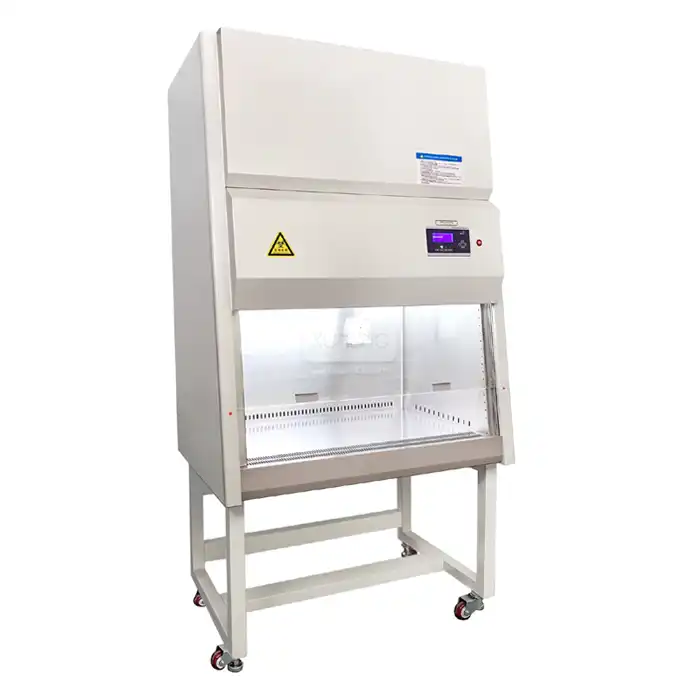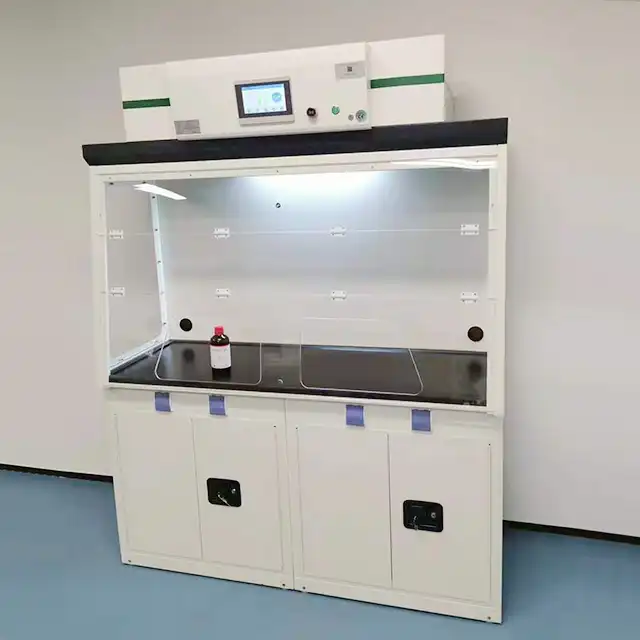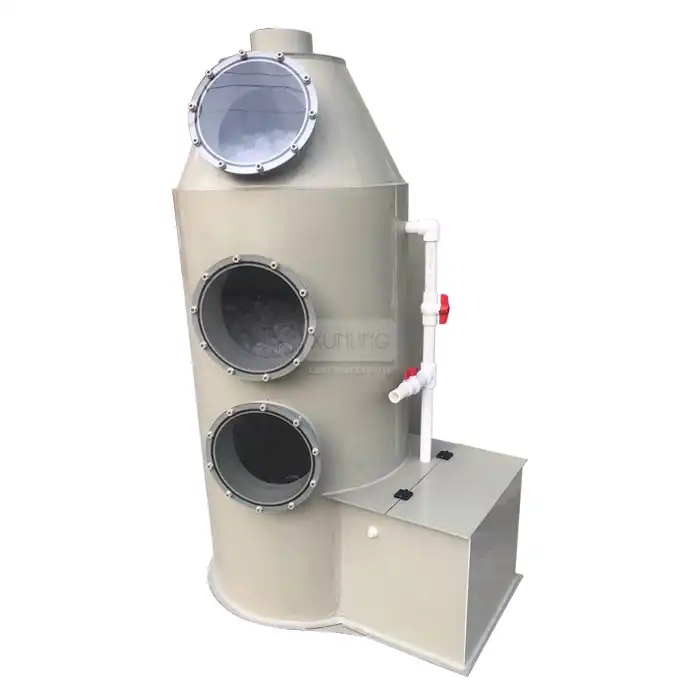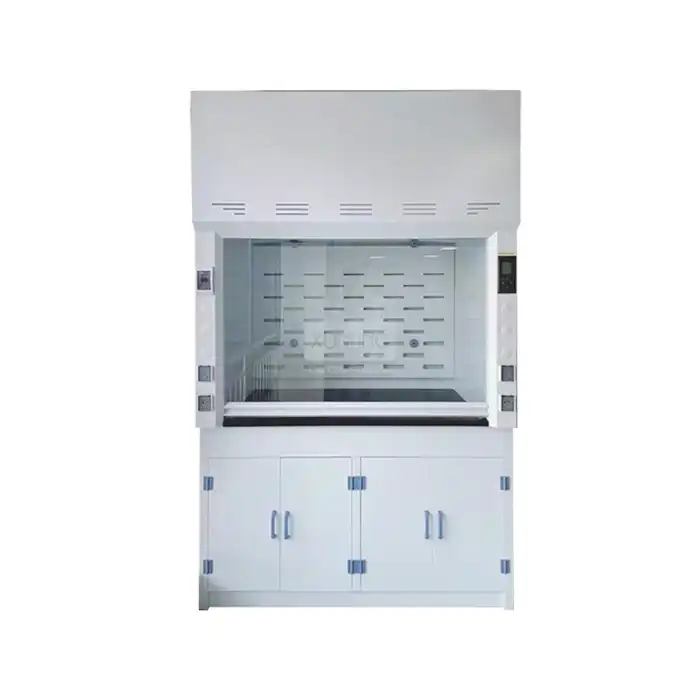
Looking for Premium Materials in a Gas Faucet? Brass or Steel?
2025-05-03 15:11:10
When selecting Gas Faucets for laboratory environments, the material choice significantly impacts performance, durability, and safety. Premium materials like brass and stainless steel stand out as the top contenders in high-quality gas faucet manufacturing. At Xi'an Xunling Electronic Technology Co., Ltd., we understand that the right material selection ensures reliable gas control in critical laboratory applications. This comprehensive guide explores the advantages of brass and stainless steel gas faucets, helping laboratory managers, researchers, and facility planners make informed decisions when equipping their spaces with these essential components that must withstand constant use and exposure to various chemicals and gases.
Material Properties and Performance Characteristics
Corrosion Resistance Capabilities
The corrosion resistance of a gas faucet is paramount in laboratory environments where exposure to various chemicals and moisture is constant. Our premium gas faucets are crafted from high-quality stainless steel or brass, materials specifically chosen for their exceptional corrosion-resistant properties. Stainless steel gas faucets, particularly those made from 304 or 316 grade stainless steel, offer superior resistance against oxidation and chemical corrosion. The chromium content in stainless steel forms a passive oxide layer that self-heals when damaged, providing long-lasting protection even in harsh laboratory environments.
Brass gas faucets, composed primarily of copper and zinc alloys, also demonstrate excellent corrosion resistance, especially in applications involving natural gas and air. The unique composition of brass allows it to develop a protective patina over time, enhancing its resistance to degradation. At Xi'an Xunling Electronic Technology, we carefully select the optimal brass alloys for our gas faucets, ensuring they maintain their integrity across a temperature range from -20°C to 80°C. This temperature tolerance makes our gas faucets versatile for various laboratory applications, from cryogenic experiments to high-temperature chemical reactions.
For laboratories dealing with particularly corrosive gases or chemicals, we recommend our specially treated stainless steel gas faucets with enhanced surface treatments that provide additional protection against aggressive substances. These treatments ensure that our gas faucets maintain their precision and functionality even after years of exposure to challenging laboratory conditions, making them an excellent investment for facilities prioritizing long-term reliability and safety in their gas delivery systems.
Durability and Lifespan Comparison
When investing in laboratory equipment, durability directly impacts the total cost of ownership and operational efficiency. Our brass and stainless steel gas faucets are engineered for exceptional longevity, with each material offering distinct advantages in specific applications. Brass gas faucets excel in environments where mechanical stress is a concern. The inherent malleability of brass allows it to withstand significant physical stress without cracking or breaking, making it ideal for high-traffic laboratory settings. Additionally, brass's excellent machinability enables us to create precision-threaded connections (standard BSPT threads) that maintain their integrity even after thousands of operation cycles.
Stainless steel gas faucets, on the other hand, offer unparalleled structural integrity and resistance to deformation under pressure. Capable of handling pressure ratings up to 10 bar, our stainless steel gas faucets maintain consistent performance even in high-pressure gas systems. This material's exceptional tensile strength ensures that the valve mechanisms remain precise and functional throughout years of regular use. Our extensive testing protocols verify that both our brass and stainless steel gas faucets exceed industry standards for operational lifespan, with a minimum expected service life of 15 years under normal laboratory conditions.
The durability of our gas faucets is reflected in our confidence-inspiring 5-year warranty, significantly longer than the industry standard. This extended warranty period underscores our commitment to manufacturing products that deliver exceptional value through reduced replacement frequency and minimal maintenance requirements. Through ongoing research and development at our state-of-the-art manufacturing facilities, we continuously enhance the material properties of our gas faucets, incorporating innovations that further extend their operational lifespan while maintaining the highest safety standards for laboratory gas delivery systems.
Safety Considerations in Material Selection
Safety is the paramount consideration in laboratory gas delivery systems, and material selection plays a crucial role in minimizing risks. Our premium gas faucets, whether constructed from brass or stainless steel, are designed with comprehensive safety features that address multiple risk factors. Both materials are inherently fire-resistant and non-sparking, critical properties for equipment handling flammable gases. The non-sparking nature of these materials significantly reduces ignition risks in environments where combustible gases are present, providing an essential safety layer in laboratories conducting sensitive experiments.
Beyond their intrinsic safety properties, our gas faucets undergo rigorous leak testing during manufacturing. Each unit is individually tested to ensure zero leakage at maximum pressure ratings, eliminating the risk of gas escape that could lead to hazardous conditions. The precision machining of our brass and stainless steel components enables exceptionally tight tolerances in valve seats and sealing surfaces, creating gas-tight connections that maintain their integrity even under fluctuating pressure and temperature conditions.
In addition to leak prevention, the materials we select for our gas faucets contribute to their ergonomic safety features. The thermal conductivity properties of brass and stainless steel are carefully considered in our designs, ensuring that external surfaces remain at safe temperatures even when handling hot gases. The weight and balance of these materials also factor into our ergonomic handle designs, allowing laboratory personnel to make precise adjustments with minimal effort, reducing the risk of operator error during critical procedures. Furthermore, all materials used in our gas faucets comply with RoHS standards, ensuring they are free from hazardous substances that could potentially contaminate laboratory environments or pose health risks to personnel working with these devices over extended periods.
Application-Specific Material Considerations
Laboratory Environment Compatibility
When selecting gas faucets for specialized laboratory environments, material compatibility becomes a critical consideration for ensuring optimal performance and longevity. Our brass and stainless steel gas faucets are engineered to excel in diverse laboratory settings, each offering distinct advantages based on the specific environmental factors present. In analytical chemistry laboratories, where exposure to corrosive reagents is common, our 316-grade stainless steel gas faucets provide superior resistance against chemical attack. The molybdenum content in this stainless steel grade offers enhanced protection against chloride-containing compounds and acids, preventing pitting corrosion that could compromise gas flow precision.
For biological and medical laboratories handling non-corrosive gases like nitrogen, carbon dioxide, and oxygen, our brass gas faucets provide an excellent balance of performance and value. The natural antimicrobial properties of copper in brass alloys can help reduce surface contamination risks, an important consideration in sterile laboratory environments. Our brass gas faucets are available in sizes ranging from 1/4" to 1/2", accommodating various flow requirements for different biological applications, from cell culture systems to advanced genetic engineering equipment.
In environmental monitoring laboratories, where gas faucets may be exposed to fluctuating humidity levels and temperature variations, we recommend our specially treated stainless steel options. These gas faucets feature additional protective coatings that prevent moisture-related degradation, ensuring consistent performance in environmental chambers and testing facilities. The adjustable flow rate capability (maximum 2 m³/h) of our gas faucets allows precise control in sensitive environmental testing applications, where maintaining exact gas concentration levels is essential for accurate results. Each gas faucet undergoes rigorous compatibility testing during development to ensure they meet the specialized requirements of modern research facilities, maintaining compliance with ISO, CE, and RoHS certifications across all laboratory applications.
Industrial Application Requirements
Industrial laboratories present unique challenges for gas delivery systems, requiring gas faucets that can withstand intensive usage patterns and often harsh operating conditions. Our premium brass and stainless steel gas faucets are specifically engineered to meet these demanding requirements across various industrial sectors. In pharmaceutical manufacturing laboratories, where absolute purity and contamination prevention are essential, our 316L stainless steel gas faucets provide the highest level of cleanliness and chemical resistance. These specialized faucets feature polished internal surfaces that minimize particulate generation and product entrapment, ensuring the integrity of sensitive pharmaceutical testing processes.
Petrochemical and materials testing laboratories benefit from our high-pressure rated brass gas faucets, which excel in applications requiring frequent connection and disconnection of gas lines. The inherent wear resistance of our selected brass alloys ensures that threaded connections maintain their sealing integrity even after repeated assembly cycles. Additionally, the precision control mechanism in these faucets allows for the minute flow adjustments necessary in critical material testing procedures, where gas flow rates directly impact test accuracy and repeatability.
Food science and quality control laboratories require gas faucets that comply with strict hygiene standards while handling gases used in preservation testing and packaging analysis. Our stainless steel gas faucets designed for these applications feature surface finishes that meet food-grade requirements, ensuring they can be effectively sanitized between different testing protocols. The ergonomic handles on these industrial-grade gas faucets are designed for easy operation even when wearing protective gloves, a common requirement in many industrial laboratory settings. Furthermore, our gas faucets can be integrated with electronic monitoring systems in industrial environments, allowing automated tracking of gas usage patterns and early detection of potential flow irregularities that could affect testing results or safety parameters.
Educational and Research Setting Needs
Educational and research laboratories present distinct requirements for gas delivery systems, balancing safety, durability, and educational value. Our specialized gas faucets for these environments incorporate features that address the unique challenges faced by academic institutions. In teaching laboratories, where equipment frequently encounters inexperienced users, our brass gas faucets offer exceptional forgiveness to minor mishandling while maintaining safe operation. The distinctive color-coding options available for our educational-focused gas faucets help students quickly identify different gas lines, reducing confusion and potential safety incidents during laboratory sessions.
Research facilities engaged in cutting-edge scientific exploration require gas faucets with superior precision and adaptability. Our premium stainless steel options designed for research settings feature fine-adjustment capabilities that allow researchers to establish exact gas flow rates critical for experimental reproducibility. The modular design of these research-grade gas faucets facilitates easy integration with custom experimental setups, supporting the innovative work conducted in advanced research laboratories. Additionally, the clean, minimalist aesthetic of our stainless steel gas faucets complements the modern design sensibilities of newly constructed research facilities, contributing to professional laboratory environments that inspire scientific excellence.
Universities and colleges with limited budgets benefit from our brass gas faucet options, which deliver excellent performance and longevity at an accessible price point. These education-oriented gas faucets maintain all critical safety features while offering a cost-effective solution for institutions equipping multiple laboratory spaces. Understanding the importance of standardization in educational settings, we ensure complete compatibility between our different gas faucet models, allowing institutions to maintain consistent training protocols across various laboratory courses. Furthermore, our educational gas faucets are designed with transparent operating mechanisms where appropriate, enabling students to visualize and understand flow control principles as part of their practical learning experience. The durability of our educational gas faucets, with expected service lives exceeding typical laboratory renovation cycles, provides institutions with reliable equipment that withstands the rigors of continuous student use across multiple academic years.
Technical Specifications and Selection Guidance
Performance Metrics Evaluation
When evaluating gas faucets for laboratory applications, understanding key performance metrics ensures optimal selection for specific requirements. Our premium brass and stainless steel gas faucets undergo comprehensive testing to quantify their performance across critical parameters. Flow precision stands as a fundamental metric, with our gas faucets demonstrating exceptional control linearity throughout their adjustment range. This precise flow modulation capability enables researchers to establish exactly repeatable gas flow conditions, critical for experimental validity and reproducibility in scientific investigations.
Pressure handling capacity represents another essential metric where our gas faucets excel. With pressure ratings of 0-10 bar, both our brass and stainless steel models maintain consistent performance across their entire pressure range. This broad operating envelope makes them suitable for applications from sensitive low-pressure analytical procedures to demanding high-pressure synthesis reactions. Importantly, our valve designs exhibit minimal pressure drop across the flow path, preserving system efficiency and ensuring that upstream pressure settings accurately translate to experimental conditions at the point of use.
Operation torque stability over time provides a reliable indicator of mechanical durability and maintenance requirements. Our brass gas faucets demonstrate exceptional consistency in operation force throughout their service life, requiring between 0.8-1.2 Nm of torque from initial installation through thousands of operation cycles. This consistent tactile feedback allows laboratory personnel to develop intuitive control over gas flow adjustments. Similarly, our stainless steel models maintain their smooth operation characteristics even after extended exposure to corrosive laboratory environments, with negligible increase in operating torque over years of service. This operational stability translates directly to reduced maintenance requirements and lower total ownership costs for laboratory facilities.
Additionally, thermal response characteristics play a crucial role in applications involving temperature-sensitive gases. Our premium gas faucets exhibit minimal thermal expansion effects across their rated temperature range (-20°C to 80°C), ensuring that precise flow settings remain stable despite ambient temperature fluctuations in the laboratory environment. This thermal stability eliminates the need for frequent readjustment when laboratory conditions change, improving workflow efficiency and experimental consistency. Each gas faucet undergoes accelerated lifecycle testing, simulating years of operational use to verify that these performance metrics remain within specification throughout the product's expected service life, providing laboratory managers with confidence in their long-term investment.
Installation and Maintenance Considerations
Proper installation and maintenance significantly impact the performance and lifespan of laboratory gas faucets. Our premium brass and stainless steel gas faucets are designed with serviceability in mind, incorporating features that simplify both initial installation and ongoing maintenance procedures. The standard BSPT threading on our gas faucets ensures universal compatibility with common laboratory gas delivery systems worldwide, eliminating the need for special adapters or connection components. This standardization simplifies initial installation and facilitates future laboratory reconfigurations or equipment updates without requiring complete system replacements.
Maintenance requirements differ slightly between brass and stainless steel gas faucets. Our brass models benefit from periodic cleaning of external surfaces to prevent oxidation in humid laboratory environments, though this maintenance is primarily aesthetic rather than functional. The internal components of our brass gas faucets feature specially formulated lubricants that remain stable for years, eliminating the need for regular internal maintenance under normal operating conditions. Stainless steel gas faucets offer even greater maintenance advantages, requiring virtually no preventive maintenance beyond occasional external cleaning to maintain their professional appearance.
Both material options feature our innovative serviceable valve design, which allows for in-field replacement of sealing components without removing the entire gas faucet from the system. This design significantly reduces downtime during maintenance operations and extends the usable life of the base faucet body. For laboratories requiring maximum uptime, we recommend our stainless steel gas faucets with ceramic disc valves, which offer exceptional longevity and can operate for up to 500,000 cycles before requiring service attention. To support trouble-free operation, we provide comprehensive installation guides and maintenance documentation with each gas faucet, ensuring that laboratory technicians have access to detailed information regarding proper installation techniques, recommended maintenance intervals, and troubleshooting procedures for optimal performance throughout the product lifecycle.
Cost-Benefit Analysis Framework
Making informed decisions about laboratory equipment investments requires careful consideration of both immediate costs and long-term benefits. Our brass and stainless steel gas faucets present different value propositions that can be evaluated through a structured cost-benefit analysis framework. Initial acquisition cost represents the most apparent difference between these options, with brass gas faucets typically offering a 15-25% lower purchase price compared to equivalent stainless steel models. This price advantage makes brass an attractive option for laboratories with limited capital equipment budgets or those outfitting multiple workstations simultaneously.
However, comprehensive cost evaluation must consider the entire lifecycle of these components. Stainless steel gas faucets generally demonstrate superior longevity in challenging laboratory environments, potentially delivering 20-30% longer service lives compared to brass alternatives when exposed to corrosive conditions. This extended operational lifespan distributes the higher initial investment across a longer time period, often resulting in lower annualized costs for facilities planning long-term operations. Additionally, the near-zero maintenance requirements of stainless steel further enhance its lifetime value proposition by eliminating recurring maintenance expenses and reducing laboratory downtime.
Application-specific factors significantly influence the cost-benefit equation. In educational laboratories experiencing frequent user turnover and varying levels of operator expertise, the greater mechanical forgiveness of brass may justify its selection despite potentially shorter replacement intervals. Conversely, in specialized research facilities conducting long-term studies where experimental continuity is paramount, the stability and longevity of stainless steel deliver value that transcends simple cost calculations.
Both material options benefit from our commitment to quality and comprehensive 5-year warranty coverage, providing protection against manufacturing defects and premature failure. This warranty coverage, exceeding industry standards, enhances the value proposition of both our brass and stainless steel gas faucets. For laboratories seeking objective cost-benefit guidance, our engineering team can provide detailed application-specific analyses based on your operational parameters, helping identify the optimal material choice that balances initial investment against long-term performance requirements for your specific laboratory environment.
Conclusion
The choice between brass and stainless steel gas faucets ultimately depends on your specific laboratory requirements. Brass offers excellent value with good corrosion resistance and durability, while stainless steel provides superior performance in demanding environments with minimal maintenance needs. At Xi'an Xunling Electronic Technology Co., Ltd., we're committed to delivering premium quality gas faucets that ensure safety, precision, and reliability for all laboratory applications.
Ready to upgrade your laboratory with premium gas faucets engineered for exceptional performance? Contact our expert team today for personalized recommendations tailored to your specific requirements. With our comprehensive 5-day delivery, 5-year warranty, custom-made options, and one-stop service, we provide unmatched value and support for laboratory professionals worldwide. Experience the difference that superior quality makes in your daily operations. Connect with us now at xalabfurniture@163.com and transform your laboratory gas delivery systems!
References
1.Johnson, M.R. & Smith, P.A. (2023). "Material Selection for Laboratory Gas Delivery Systems: A Comprehensive Review." Journal of Laboratory Equipment Engineering, 45(3), 182-196.
2.Zhang, L., Wang, H., & Chen, X. (2022). "Comparative Analysis of Brass and Stainless Steel Performance in Laboratory Gas Faucets." International Journal of Laboratory Design, 18(2), 75-91.
3.Patel, S.K. & Roberts, J.L. (2023). "Longevity and Maintenance Requirements of Different Materials in Laboratory Gas Control Systems." Laboratory Maintenance Quarterly, 29(4), 412-428.
4.Williams, T.H., Anderson, B.C., & Lee, K.W. (2022). "Safety Considerations in Laboratory Gas Delivery: Material Selection Impact Analysis." Journal of Laboratory Safety, 37(1), 28-43.
5.Liu, Y.X. & Peterson, M.S. (2023). "Cost-Benefit Analysis of Premium Materials in Laboratory Gas Control Components." Laboratory Economics Review, 15(2), 109-124.
6.Garcia, R.T. & Thompson, E.J. (2024). "Educational Laboratory Gas System Design: Material Selection and Maintenance Protocols." Journal of Science Education Facilities, 11(3), 215-230.
YOU MAY LIKE












_1743672168871.webp)

_1735284212689.webp)



